
September 4-October 19, 2019
Curated by Christine Shaw
Click here to download the micropublication featuring a
curatorial essay, exhibition infromation, biographies, and full colour illustrations throughout.
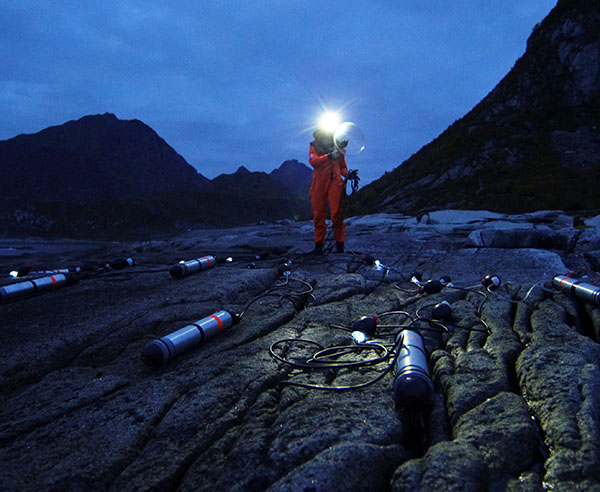
Logics of Sense
Although the worlds we inhabit are invariably composed of sensations and sense-makings, it is a peculiar challenge to perceive ourselves sensing. Because our human-centred sensory habits are so difficult to discern, we can often mistake them for natural tendencies. As an attunement to the aesthetics of sensation, the exhibition Logics of Sense—presented in two parts at the Blackwood Gallery, University of Toronto Mississauga—examines sense-in-the-making, from the surface of incorporeal events to a multiplicity of decentralized perceptions, and from itinerant geo-methodologies to the various disciplinary frames and frameworks that artistic intelligence retrofits for emergent social and political realities.
Logics of Sense 1: Investigations (September 4-October 19, 2019) includes works from Ursula Biemann, Mikhail Karikis, Susan Schuppli, and Jol Thomson; their respective videos and video essays address the interactions between land and the atmosphere, changing planetary dynamics, terrestrial micro-events, and the inheritance of knowledge. Moving through modes of prediction, observation, expression, perception, and re-configuration, visitors are invited to explore the becoming-sensuous of technoscience in formation.
Logics of Sense 2: Implications (October 28–December 7, 2019) includes works by Revital Cohen & Tuur Van Balen, Barbara Marcel, Beatriz Santiago Muñoz, Miles Rufelds, and YangMing. Among their videos, sculptures, and screenings, visitors are implicated in both seeing like a state and sharing in ecological complicity through colonial pasts and capitalist futures. As geopolitical backstories unfold to reveal an entropic obsolescence of objects, a storm builds toward the moment of its explosive release.
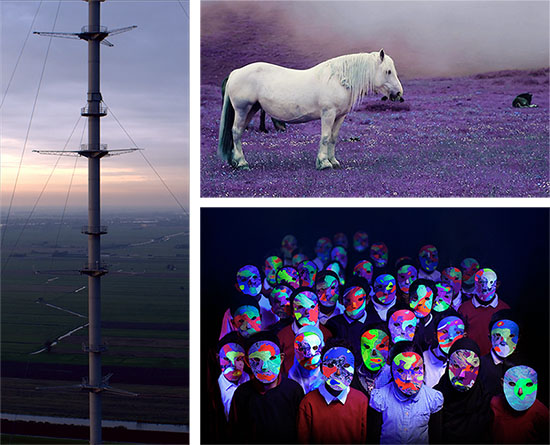
HD video with stereo sound, 18:50 min.
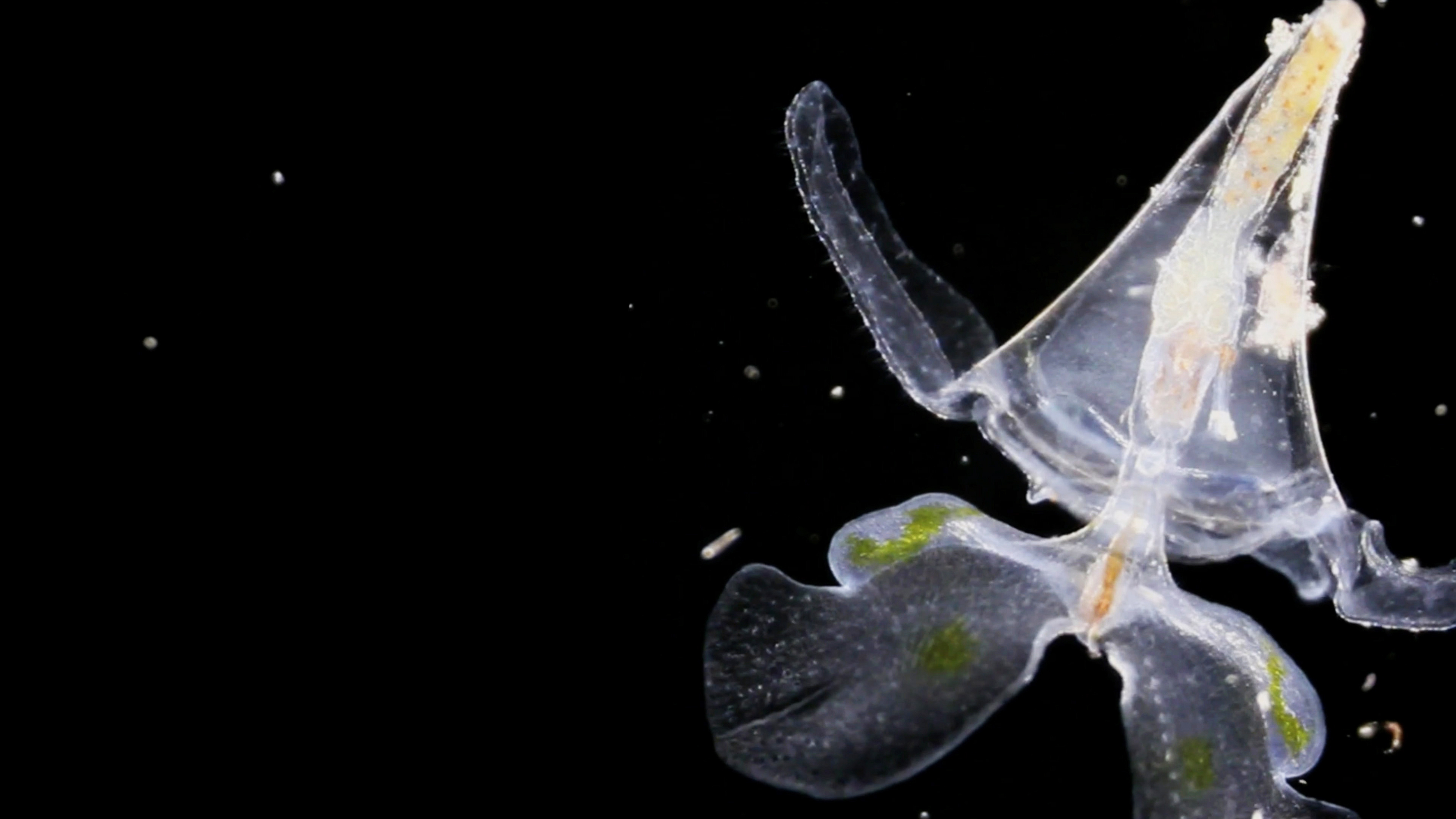
Ursula Biemann’s Acoustic Ocean combines scientific, personal, and phenomenological narratives in an exploration of oceanic depths and interspecies relations above and below the waterline of the Lofoten Islands in Northern Norway. A piece of science-fiction poetry, this film intertwines new technological research with inherited knowledge, and the sounds of the submarine. For the great majority of underwater beings, bioluminescent and sonic manifestations are the primary means of communication, navigation, and survival in this penumbral liquid universe due to poor visibility in the deep sea. The multitude of creatures that dwell here range from microscopic forms with transparent bodies and luminous organs, glowing wing-like fins and whiskers, to gargantuan mammals that speak in echoes and rise for air every hour. The female aquanaut and human protagonist of Acoustic Ocean therefore places sensing instruments such as hydrophones and parabolic microphones along the shore in order to detect, and connect with, the visual and acoustic forms of expression exchanged between these diverse organisms.
HD video with stereo sound, 7:44 min.

Working across film, sound, and performance, Mikhail Karikis’s project adopts Ted Hughes’s children’s science fiction novel The Iron Woman (1993) as an ecofeminist parable in which communal listening and noise-making become tools to transform the world. In this story, a female superhero gifts children with a mysterious power–a noise. Transmitted by touch, this noise resonates with the collective howl of creatures affected by the pollution of the planet. As the children take matters into their own hands, they infiltrate factories and “infect” adults with their demand for immediate action.
For No Ordinary Protest, Karikis engaged with a group of 7-year-olds from a London Primary School throughout their acfademic year. Through workshops, experimental pedagogical methods, reading, debating, and play, they created a film together which reflects on the environmental themes of the book and imagines the enigmatic noise that assists the protagonists in their protest. In Karikis’s project, the children gather to debate and they discover a shared sense of justice and responsibility towards the environment, and the urgent need for solidarity with all creatures. The video concludes with the children’s transformation into playful yet monstrous masked agitators confronting the viewer. While being uncertain about our ecological future, No Ordinary Protest uncovers children’s political voice and activist imagination, where communal listening and noise-making become tools that can “move mountains” and transform our world.
35mm vertical film transferred to HD video, stereo sound, 17:50 min.
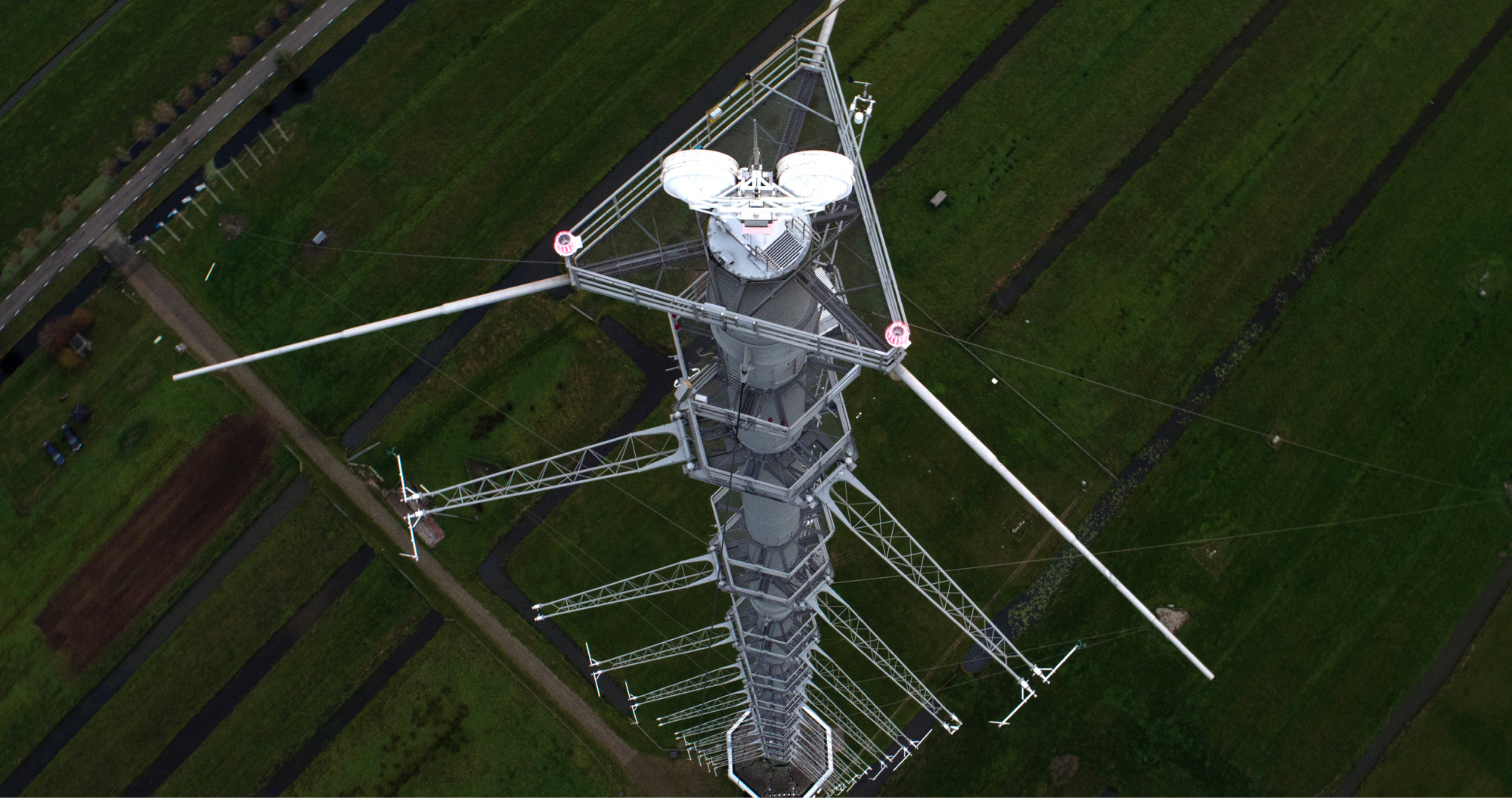
In a rural landscape approximately an hour due south of Amsterdam, an open-air laboratory is tuning into the atmospheric frequencies of nature: separating the signal of climate change from the noise of cyclical variability. Since 1970, the Cabauw Experimental Site for Atmospheric Research has been measuring and monitoring the changes taking place in the feedback loops between land surface processes and the airborne dynamics of our planet. Studying the ways in which the complex behaviour of clouds, aerosols, radiation, precipitation, and turbulence interact with terrestrial events, Susan Schuppli’s Atmospheric Feedback Loops envisions what a cultural approach might be to the uncertainty expressed by and through the calculation of climate change.
HD video with stereo sound, 24 min.
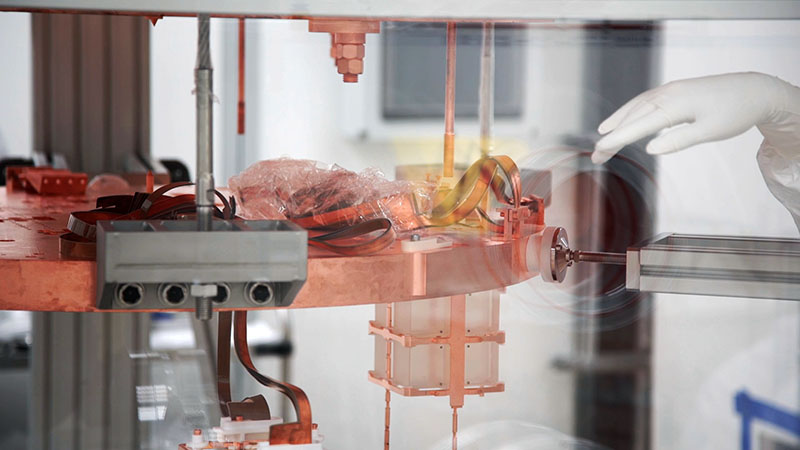
Jol Thomson’s G24|0vßß is filmed entirely in and around one of the world’s leading neutrino and dark matter physics sites, The Cryogenic Underground Observatory for Rare Events (CUORE) at the National Laboratory of Gran Sasso where physicists from several countries are searching for a theoretical process known as double beta decay without neutrino emissions, or 0v. This research takes place at the heart of the Gran Sasso Mountain in Italy, where the team has succeeded in creating the coldest point in the observable universe within a cubic meter of Tellurium crystal and copper. The artist has allowed himself to dream with and into this space, resulting in a composition that navigates the indistinguishable boundary between technology and nature, and between our immediate environment and the cosmos at large. In a montage of psychedelic video sequences, punctuated with quotes from Stanisław Lem’s science fiction novel His Master’s Voice (1968), G24|0vßß documents the flora and fauna of the mountain as well as the human interventions that have transformed it into one of the most sophisticated pieces of technology on the planet.
Global Climate Strike
September 20-27
Logics of Sense 1: Investigations is presented within the context of the Global Climate Strike when millions of people around the world will walk out of their workplaces and homes to join young climate strikers on the streets and demand an end to the age of fossil fuels. The Blackwood’s exhibition forms one part of the University of Toronto Mississauga’s active participation in the strike throughout the month of September through a series of events and by offering relevant resources to the community. For more information and to participate, see here.
Banner Making Workshops with Justseeds
Monday September 16–Thursday September 19, 10am-5pm
Friday September 20, 10am-12pm
Outdoors at CCT Main Entrance, University of Toronto Mississauga
In advance of the Global Climate Strike walk-out on September 20, join facilitators from the Justseeds Artists’ Cooperative to create banners, placards, and posters in support of climate justice. Sharing techniques from the long-standing tradition of artmaking for protest movements, guest artists Mary Tremonte and Jesse Purcell will share strategies for slogan-writing, screen-printing, hand-painting, and iron-on adhesives in daily workshops and drop-in arts builds. The collection of signs and banners co-produced throughout the week will be made available to participants in the September 20 walkout.
More exhibition-related programming, including a performance-lecture, artist-led workshop, and bus tour will be announced soon!
Ursula Biemann is an artist, author, and video essayist based in Zurich, Switzerland. Her artistic practice is strongly research-oriented and involves fieldwork in remote locations where she investigates climate change and the ecologies of oil and water, as in the recent projects Acoustic Ocean (2018), Forest Law (2014), Deep Weather (2013), and Egyptian Chemistry (2012). In her earlier art and curatorial work she made space and mobility her prime category of analysis, for example in the widely exhibited art and research project Sahara Chronicle (2006-2009) on clandestine migration networks. Her video installations are exhibited worldwide in museums and the International Art Biennials of Liverpool, Sharjah, Shanghai, São Paulo, Sevilla, Istanbul, and Venice. Biemann has published several books and is founding member of the collaborative art and media project World of Matter. Biemann has a BFA from the School of Visual Arts and attended the Whitney Independent Study Program in New York (1988). She received a doctor honoris causa in Humanities by the Swedish University Umea and the Prix Meret Oppenheim, the Swiss Grand Award for Art, and the Prix Thun for Art and Ethics.
Mikhail Karikis is a Greek-British artist living in London. His work embraces film, sound, performance, and photography. He employs listening as a form of activism and develops projects with communities located outside the context of contemporary art who may be pushed into economic and socio-geographic fringes. In recent years, Karikis has been collaborating with teenagers and children to explore legacies they inherit from older generations, including narratives of techno-dystopias, and ecological and economic injustice. While prompting participatory and activist imaginaries, Karikis’s projects rouse the potential for people to imagine alternative futures of self-determination and potency. Karikis has exhibited at 54th Venice Biennale, 2011; Manifesta 9, 2012; 2nd Aichi Triennale, 2013; 19th Biennale of Sydney, 2014; Kochi-Muziris Biennale, 2016; Yebisu International Festival, Tokyo Photographic Art Museum, 2019. He has recently had solo exhibitions at Whitechapel Gallery, London, (2018-2019); MORI Art Museum, Tokyo, (2019); Fondazione Sandretto Re Rebaudengo, Torino, (2019); Turku Art Museum, (2018); Aarhus 2017 European Capital of Culture, (2017) and Casino Luxembourg Forum d’art contemporain, (2017). Forthcoming solo exhibitions include his survey exhibition at Middlesbrough Institute of Modern Art (MIMA); I Hear You, De la Warr Pavilion; and an In Focus exhibition at TATE, St Ives.
Susan Schuppli is an artist and researcher whose work examines material evidence from war and conflict to environmental disasters. Creative projects have been exhibited throughout Europe, Asia, Canada, and the US. Recent commissioned works include Learning from Ice, Toronto Biennial; Nature Represents Itself, SculptureCenter; Delay Decay, Garage Museum of Contemporary Art, Moscow; Trace Evidence, Extra City, Antwerp & Bildmuseet, Umea; and Atmospheric Feedback Loops, a Vertical Cinema project for Sonic Acts, Amsterdam. She has published widely within the context of media and politics and received the ICP Infinity Award for Critical Writing and Research in 2016. Her book, MATERIAL WITNESS: Media • Forensics • Evidence, published by MIT Press will be released in 2020. Schuppli is Director of the Centre for Research Architecture, Goldsmiths University of London and is an affiliated artist-researcher as well as board chair of Forensic Architecture.
Jol Thomson is an artist, sound designer, and researcher interested in the potential to bypass dominant Western rationality through critical engagements with the matter(s) and meanings of contemporary (particle) physics. Thomson completed his HBA at the University of Toronto in 2009 and received his meisterschüler in Fine Art from Professor Simon Starling at the Städelschule, Frankfurt aM in 2013. He was recently awarded an international studentship to pursue a practice-based PhD at the University of Westminster in London, where he is currently based. Between 2014–2016 he developed and taught an experimental interdisciplinary arts pedagogy for architects with artist Tomás Saraceno at the Technical University of Braunschweig in Germany. In 2016 he won the MERU Art*Science Award for his audio-visual composition G24|0vßß. That year he was a fellow of the Akademie Schloss Solitude and in 2017 he was a resident of the Bosch GmbH’s Centre for Research and Advanced Engineering, Stuttgart. Recent screenings and selected exhibitions include Recontres Internationales: Contemporary Moving Image, Pompidou, Paris and HKW, Berlin (2019);at Quantum Real: Spectral Exchange, Exhibition Research Lab, Liverpool (2019); Galleria d’Arte Moderne e Contemporanea, Bergamo (2019); Blind Faith: Between the Cognitive and the Visceral in Contemporary Art at the Haus Der Kunst, Munich (2018); Open Codes: Living in Digital Worlds, ZKM (Center for Art and Technology), Karlsruhe (2017-2018). In 2017 he published Intra-acting With the IceCube Neutrino Observatory; or, how the technosphere may come to matter, with Dr. Sasha Engelmann in a special issue of the Anthropocene Review.